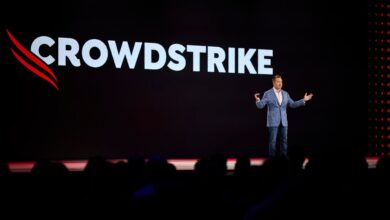Democratizing Cybersecurity With AI And Autonomy

Autonomous security can unlock the potential of AI for a more proactive approach to security that … [+]
The cybersecurity landscape is witnessing a transformative shift towards democratization, where powerful tools once exclusive to large organizations with hefty budgets are now accessible to security analysts at all levels. This evolution is being propelled by the advent of AI and one company that is betting that the integration of autonomous security technologies can deliver enhanced protection and efficiency.
Democratizing Advanced Security Tools
Traditionally, the most advanced cybersecurity tools have been the domain of well-funded, large-scale enterprises. Small to mid-sized organizations often struggle to keep pace due to resource constraints.
But the battle between David and Goliath is about to end.
AI and autonomous security technologies can level the playing field. These advanced tools can offer high velocity and performance, making advanced security operations accessible to companies of all sizes.
There are plenty who doubt this vision or see it as too far off. But, autonomous security operations are already possible. SentinelOne announced that it is putting these solutions to work to not only democratize cybersecurity but also amplify the overall resilience of the digital ecosystem against threats.
Tomer Weingarten, CEO of SentinelOne, described how this innovation enables customers to shift from a purely reactive posture to a predictive and autonomous approach to security. “Imagine a future where security solutions not only help enterprises respond to threats, but anticipate and mitigate them before they lead to a security incident.”
The Role Of Autonomous AI In Cybersecurity
As Ric Smith, chief product and technology officer at SentinelOne sees it, autonomous security goes beyond the capabilities of traditional AI chatbots or virtual assistants. The next-generation AI in his mind is capable of generating complex data queries from simple natural language inputs. More importantly, it anticipates the needs of security analysts, suggesting proactive steps and streamlining the decision-making process. By doing so, it transforms reactive security postures into proactive threat prevention and management strategies.
The true value of autonomous AI lies in its ability to not just respond to queries but to proactively manage and mitigate potential security threats. This capability ensures that AI does not merely perform tasks as instructed; instead, it acts on behalf of analysts to address issues even before they escalate. This forward-thinking approach is crucial for maintaining a robust security posture in an era of increasingly sophisticated cyber threats.
Implications For The Cybersecurity Workforce
The integration of autonomous security tools is a force multiplier that elevates both scale and skill to empower analysts at every level, enabling them to perform at a capacity and speed that were once only achievable by their counterparts in larger organizations. This empowerment leads to a more dynamic and responsive cybersecurity workforce, capable of addressing threats swiftly and effectively.
The proactive nature of autonomous AI also helps address the challenge of burnout and alert fatigue by reducing the cognitive load on analysts. By automating routine tasks and predicting necessary actions, these tools allow analysts to focus on more strategic, high-impact work. This not only enhances job satisfaction but also significantly improves the efficiency and effectiveness of cybersecurity teams.
The good news—despite all dystopian predictions to the contrary—is that it is unlikely that AI is going to put security analysts out of work. The phrase, “It’s not that AI is going to steal your job, it’s that someone who knows how to use AI is going to steal your job,” has become more or less ubiquitous.
Autonomous AI is not designed to replace security analysts. It is intended to augment and amplify them. Smith described the challenges security analysts face from the increasing complexity of the threat landscape and the increasing volume of threats, and proclaimed, “What we need is a set of defenders that are actually going to be able to take this kind of capability and leverage it to keep up with the surmounting threats.”
Steve McDowell, Chief Analyst, NAND Research is quoted in a press release with insight on why this is a game-changing approach. “Generative AI gives you a window into everything that’s happening across your environment and allows you to have a real, data-driven conversation with your infrastructure.
Defining The Future Of Security
The shift towards autonomous security represents a significant advancement in the field of cybersecurity. By democratizing access to advanced tools and incorporating AI that proactively manages threats, visionary companies are setting a new standard for what technology can achieve. As these tools continue to evolve, they will undoubtedly play a pivotal role in shaping the future of cybersecurity, making it more accessible, intuitive, and effective for organizations of all sizes.
This approach underscores the transformative impact of autonomous security technologies on cybersecurity, focusing on their potential to empower analysts and enhance organizational security postures. As Ric Smith puts it, “Autonomous security doesn’t just do what you ask it to, it does what you need it to.”
As we move forward, it will be intriguing to see how these technologies continue to evolve and redefine the boundaries of what is possible in cybersecurity.



